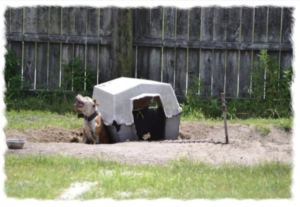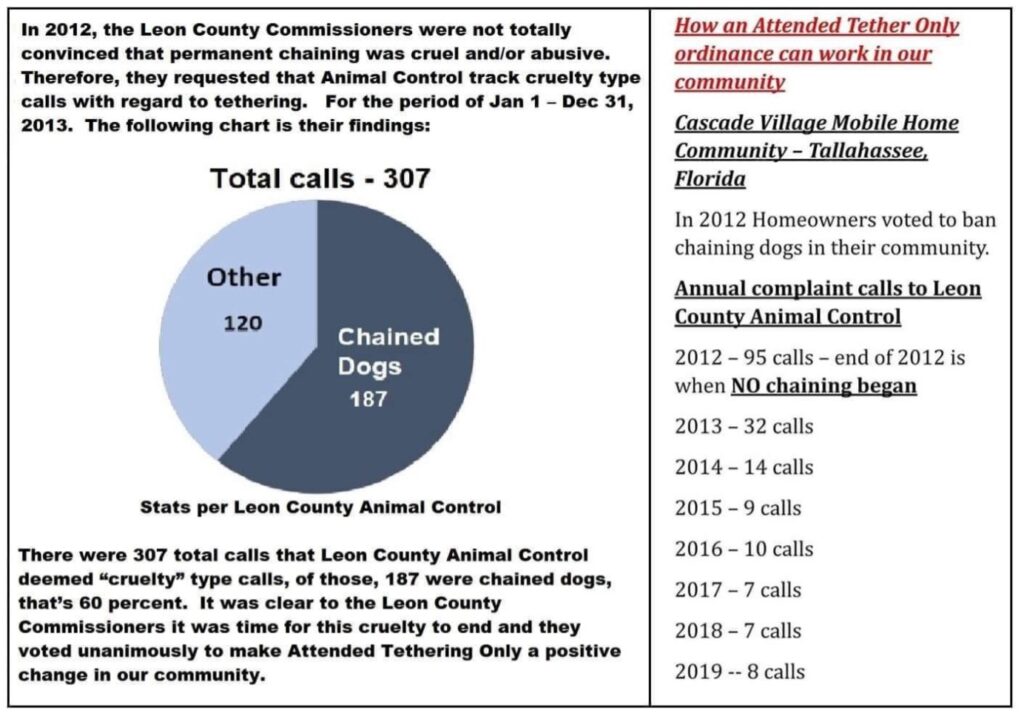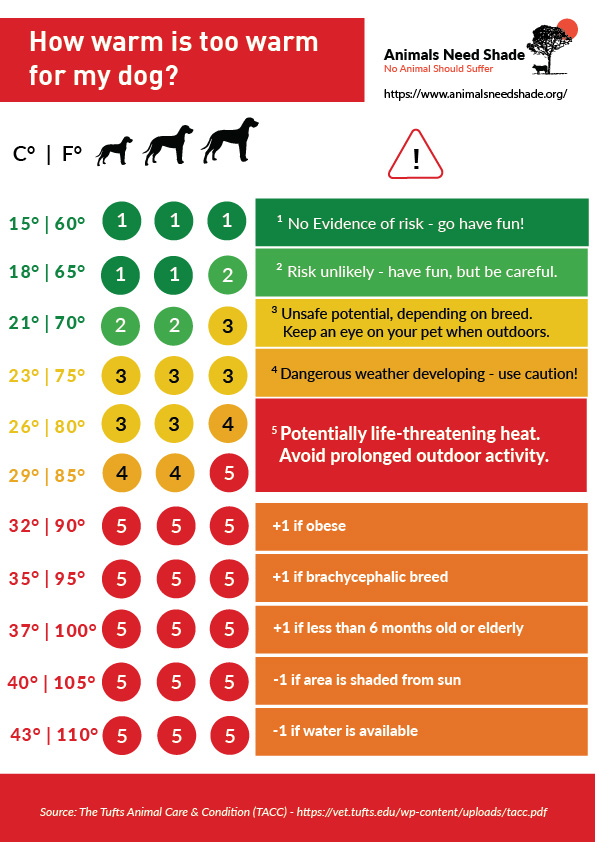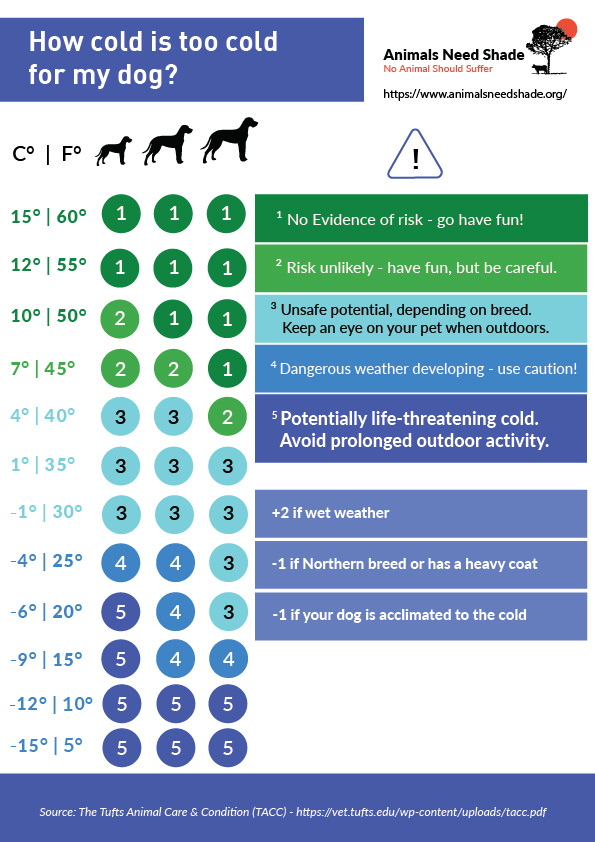Submission to the review of the Animal Care and Protection Act 2001
The Animal Care and Protection Act 2001 is the principal animal welfare legislation in Queensland. The government has finally decided it’s time for a review – 20 years after the act came into force.
Public comment has been invited as part of the review. You can do that it two ways. By completing the survey or making a submission. We urge you to do both. It takes numbers to convince governments that people care about the treatment of our animals.
Survey
You can find details of the survey here where you can also download a discussion paper that will give you more information on the review process.
The survey has questions about the scope of the current Act and a chance to comment on or add extra information for each of the questions.
Submission
See tips for writing a submission. It can be as long or as short as you like.
Here is our submission on shade/shelter for farm animals.
Below is the submission on dog tethering.
Submission to the review of the Animal Care and Protection Act 2001
Thank you for the opportunity to contribute to this review. Animals Need Shade is a volunteer organisation that has been operating since 2019 and in just two years has attracted 200,000 supporters and followers.
The focus of this submission is dog tethering and confinement. A warning, this document contains images that may cause distress.
Animals Need Shade believes Queensland’s current legislation does not protect dogs from cruelty and abuse. The new animal care and protection act must change this and ensure that:
No person is permitted to tether a dog to a stationary or inanimate object as a means of confinement or restraint unless that person is outside with the dog, and the dog is always visible to that person. Dogs kept outside must be in a fully fenced or secure yard with sufficient space for the dog to exhibit natural behaviours. Dogs must have access to adequate shade/shelter and water at all times.
Animal Care and Protection Act 2001
Chapter 3, Part 5, Division 1, Section 33
Obligation to exercise closely confined dogs
(1)A person in charge of a dog that is closely confined for a continuous period of 24 hours must, unless the person has a reasonable excuse, ensure the dog is exercised or allowed to exercise itself for—
(a)the next 2 hours; or
(b)the next hour and for another hour in the next 24 hours.
Maximum penalty—20 penalty units.
(2)In deciding whether a dog is closely confined for subsection (1), regard must be had to the dog’s age, physical condition and size.
This means that under current legislation in Queensland, a dog can be tied to a rope or chain for 23 out of 24 hours a day. According to the RSPCA the most shocking result is dogs found dead or dying at the end of a chain, suffering exposure, thirst and starvation.
The RSPCA, many American animal control agencies, and animal welfare groups all oppose unsupervised tethering as cruel and inhumane.
In addition, they argue that it makes dogs more aggressive. This has a flow on effect for the community through health and safety implications.
Dog tethering and confinement must be prohibited. Dogs must be kept in secure, fenced yards designed to suit the dog’s size, age and species. Dogs must have ready access to shade/shelter and water at all times.
Tethering can kill or injure a dog
Chained dogs are often hanged or are choked after becoming entangled in chains or trying to leap over fences etc. Effects and injuries from long term tethering include:
- necks can become lacerated, sore and raw
- collars can painfully grow into their skin
- vulnerable to insect bites and parasites
- out of sight, they are often neglected and starved
- dogs can get tangled in a rope or chain and become so restricted that they are trapped in full sun unable to reach shelter or water, left exhausted, helpless and stressed
- boredom and neglect can result in aggressive behaviours
It has been found that owners who confined their dogs were less likely to clean their area of confinement, causing the dogs to eat and sleep in an area contaminated by urine and faeces.
The Washington (D.C.) Humane Society says, “Chaining, by definition, keeps a dog in solitary confinement, continually thwarting [the animal’s] pack instinct to be with other animals or with [his or her] human pack”.
The United States Department of Agriculture recommended banning dog tethering more than 20 years ago, arguing it was not humane.


These dogs were discovered after complaints to the RSPCA.
Bundy had been chained for most of his life, 3 years. He had no access to bedding, enrichment or exercise.
Jadda was found tied in the sun with no access to water.
She was very ill and very emaciated but has since made a fully recovery.
Bundy had serious behavioural issues.
This must not be allowed to continue.
RSPCA advice – don’t tether your dog
RSPCA inspector Penny Flaherty says dog owners should give up their pets rather than tether them all day. Inspector Flaherty made the public appeal after attending the third dog death in her region. Fraser Coast Chronicle Feb 2017
The latest tethering victim was on a chain attached to a runner. “He’s got caught somehow in that. So he did have access (to water and shelter) but once he was tangled, he couldn’t access it.” It’s not known how long the dog was left before being discovered.
“This incident could have been prevented if the dog had a proper enclosure. The cause of the death is yet to be confirmed, but heat was certainly a factor. The dog (a male staffy) also had injuries from struggling to free himself”.
The discovery comes only days after a large mastiff was found “with its organs boiling”, tied up to a clothesline, amid a scorching heatwave in Hervey Bay.
Inspector Flaherty had also been called to a small poodle in Bundaberg that died under similar circumstances.
“Tethering shouldn’t be a lifetime option for the animal, it’s not a quality life, if you can’t give it that, then re-home it, that’s being responsible”
Tethering complaints in Queensland
Close to a third of dog welfare complaints in a recent retrospective study were related to dogs that were confined or tethered. The study included 107,597 complaints received by RSPCA Queensland from 2008 to 2018. The number of complaints increased by 6.2 per cent each year.
In a recent complaint about a dog that was left continuously tied to a clothesline, RSPCA inspectors found that the border collie dog had been tied that way for two years.
The RSPCA says tethering poses many risks to a dog’s welfare. Tethering for long periods also means dogs are unable to express their natural behaviours like social interaction with people or other dogs. This form of abuse can make once friendly dogs anxious, reactive and aggressive. They can then become a threat to people and especially children.
Dog attacks and some of the causes
Chained dogs are nearly three times more likely to attack than dogs not tethered,
Centre for Disease Control and Prevention (CDC)
Dog ownership in Australia has continued to increase over the last decade.Today, it has been estimated that 40 per cent of households live with a dog (Animal Medicines Australia 2019). As a result of increased number of dogs living in our society, attacks by dogs have risen in the last decade. These attacks can lead to hospitalisation and can even be fatal. It has been shown that our most vulnerable citizens, children aged 0-9 and the elderly are most at risk of dog attacks. Dog bite attacks have increased in Australia in recent years with over 2000 cases reported annually on average. Emergency hospital presentations after dog bites are associated with the public’s increased awareness of the possibility of infections and the common need for surgical intervention.
“Dogs tethering or chaining a dog can contribute to aggressive behaviour. Dogs should be kept in a fenced yard.” American Veterinary Medical Association
Tethering and aggression in dogs
“Virtually every dog that spends a significant amount of time tethered will suffer some temperament problems” PETA
One of the causes of attacks by dogs is associated with inadequate housing and socialisation. Limiting a dog’s access to regular social and physical interactions with humans and other dogs can lead to serious behavioural changes which will affect their physical and psychological well-being. Dog owners who chain or tether their dogs, including the use of Ziplines, do so mostly as a way to control their dogs and avoid escape or damage to their property.
They leave their dogs mostly unattended in the backyard. Often, the dogs are also unable to seek shelter from the elements or have access to fresh water. Ziplines can become a serious hazard, posing choking and tangling danger leading to serious injuries or painful, slow death. These dogs are alone for most of their lives and many suffer in silence, unseen or unheard unless an attack happens or a concerned citizen reports them.
Often, such dogs are also denied adequate shelter, food or water, exacerbating the physical and psychological impact on these dogs and leading to a range of behavioural problems. It is therefore not surprising that chained or tethered dogs are at a high risk of developing serious behavioural issues, regardless of breed. In most cases, these dogs will become aggressive over time.
Ongoing barking or whining by tethered dogs may also lead to cruelty in misguided efforts to punish the dog for such behaviour. During 2019, four cases of dog chaining/tethering were prosecuted in court for severe abuse and neglect. However, the true number of cases remains unknown.
A study of complaints in Queensland to the RSPCA between 2008 to 2018 (cited earlier) found one of the most common complaints was associated with lack of exercise, confinement or tethering. This is potentially a serious issue for Queensland not just because of animal welfare issues but also the related healthcare and social burdens.
“In addition to frustration, the constant physical restraint promotes excessive territoriality, which may be manifested as aggression,” These attacks are unnecessary as they are easily preventable by using a secure fence for containment.” Veterinary neurologist Elizabeth Shull
US research on major factors in dog bites
Journal of the American Veterinary Medical Association (JAVMA)
Co-occurrence of potentially preventable factors in 256 dog bite–related fatalities in the United States (2000–2009).
The study found that the major factors in the fatalities studied include:
- absence of an able-bodied person to intervene (87.1 per cent)
- incidental or no familiar relationship of victims with dogs (85.2 per cent)
- owner failure to neuter dogs (84.4 per cent)
- compromised ability of victims to interact appropriately with dogs (77.4 per cent)
- dogs kept isolated from regular positive human interactions (76.2%)
- owners’ prior mismanagement of dogs (37.5 per cent)
- owners’ history of abuse or neglect of dogs (21.1 per cent)
Four or more of these factors were present in over 80 per cent of the dog bite related deaths.
Considering that over 75 per cent of dog bite related deaths were caused by a dog isolated from positive human interactions and usually kept chained outside, reducing this practice is a huge factor in preventing dog bites, as is neutering male dogs.
Social costs of dog tethering and neglect
Allowing people to restrain their dogs in this abusive manner, frequently causes discord among neighbours, resulting in arguments, possible altercations. It can compel people to trespass to assist the dog or to even steal it. Below, media reports of neighbourhood reactions to dog tethering cases.
A warning, these sites contain images that may cause distress.
- https://www.wfxrtv.com/news/local-news/neighbors-speak-out-about-viral-video-appearing-to-show-dog-in-distress/
- https://www.knoxnews.com/story/news/local/2019/08/14/gary-bean-obituary-knoxville-man-wont-apologize-stealing-dog/2006268001/
- https://www.waaytv.com/content/news/Neighbors-concerned-about-tethered-dogs-in-Limestone-Co-506852391.html
- https://www.youtube.com/watch?v=Tb58SwmkxR8&list=PLmZKUnujWJHef3mk5am1aZKr1zrDAZkhd&index=3
- https://www.youtube.com/watch?v=ei350UG26u0&list=PLmZKUnujWJHef3mk5am1aZKr1zrDAZkhd&index=5
- https://www.youtube.com/watch?v=1VUGGD7uJOw&list=PLmZKUnujWJHef3mk5am1aZKr1zrDAZkhd&index=6
- https://www.youtube.com/watch?v=mE-h8_N0-qk&feature=youtu.be
- https://kfor.com/2018/12/03/concerned-resident-calls-in-neighborhood-dog-after-she-says-it-was-neglected/ (NO VIDEO)
- http://www.chathamstartribune.com/news/article_0bd07b60-6053-11e8-912c-972c8427a12c.html
Bans on tethering get results
Chaining or tethering has become unlawful in Germany, Hungary, Malta and other countries and is banned or controlled in 23 American states.
Animal welfare authorities in those states report:
- saved public funds from reduction in hospital, insurance, ambulance, psychological counselling, and other fees related to the trauma from dog bites comprising of injury and death
- created a safer community
- changed life for the better for many neglected dogs
Extracts of reports from state enforcement officers:
Animal Control Director: Daisy Brown North Carolina – the ordinance has been “absolutely good” for the dogs in the community. Dogs that are chained without human contact and love become problems for the community.
Animal Control Abatement Officer Connie Artym Carthage, Missouri
Some residents do not like the ordinance, but it has been good for the community. We receive less and less calls about chained dogs now. Some people will give up their dog instead of making different accommodation for the dog.
County Animal Services Director Dianne Sauve Palm Beach
We initially passed a time limit ordinance……..in my opinion it resulted in additional calls for follow up and resolution.
Chief Humane Officer Kathryn DestrezaIs New Orleans, Louisiana
Most of the residents were very much in favour of the ordinance. In some instances, there have been animals given up due to the resident not being able to comply with the ordinance because of financial constraints. The ordinance has been good in that it has helped with the pit bull fighting rings and with incidents of aggression. Chaining leads to aggression and a low quality of life for the dogs.
Climate change and weather extremes
Heat stress was among the top animal cruelty complaints the RSPCA received last year. In 2020, 1,116 emergency calls to the Queensland RSPCA were related to animals suffering in hot conditions. The RSPCA says Queensland’s heat is deadly.
The Climate Council says climate change must be considered in all animal welfare legislation.
Tethered dogs at serious risk
Dogs that are left tethered are more vulnerable to the effects of heat pain. Even if shelter is provided, they often become entangled and can’t physically reach that shelter.
Dogs (like many animals) feel the effects of heat and cold before humans do.
As a general rule, a dog’s preferred temperature range is between 10 to 20 degrees. However this is influenced by other factors like humidity, reflected UV rays, wind chill. The dog’s breed, age, and general health will also affect how a dog copes with weather extremes. Young, old, pregnant or lactating animals are more vulnerable, as are those with pre-existing conditions.
The increase in temperatures and climate change are causing animal welfare issues. At 23 degrees there is already an unsafe potential for smaller to medium dogs and other breeds such as huskies. At 26 degrees there is dangerous weather developing. At 29 degrees it can be potentially life threatening. At that temperature all dogs should avoid prolonged outdoor activity.
ACPA review must ban dog tethering

It is time that the Queensland Government moved to protect dogs that live their lives ‘Out of sight, out of mind’
As noted, the RSPCA Queensland does not recommend chaining or tethering a dog .
As part of its review of the ACPA, Animals Need Shade is urging the Queensland Government to ban dog tethering. This practice can kill. It can also make otherwise friendly dogs aggressive and therefore dangerous to the public.
Banning dog tethering will improve the lives of thousands of dogs that now spend every day at the end of a chain, exposed to the heat, wind and cold. These dogs suffer terrible neglect, unable to express their natural behaviours or to socialise with people and other dogs. They are forgotten and abandoned denied even basic animal welfare rights.
The ACPA review must:
Ban dog tethering
- End legislation that allows dogs to be left tethered/confined, without access to proper shelter, or the chance to display normal healthy movements like running or playing.
- Change the law to ensure unattended dogs are kept in secure, fenced yards suitable to their size and breed with adequate shelter and access to clean water and food.
- Educate the community to understand that tethering is not just bad for dogs, it’s bad for people too. An otherwise friendly dog when kept continuously tied up becomes unhappy, anxious, neurotic and often aggressive. Children can be the innocent victims of a dog that has become aggressive because of this abusive treatment.
- Change the law to ensure short duration tethering only takes place when the person in charge is outside with the dog in their sight at all times.
- Ensure animal welfare investigators have the power to intervene if an unattended dog is left tethered or confined.
- Ensure dogs kept outside do not live in cages or crates.
Fenced yards must suit a dog’s size and breed
A secure, fenced yard is recommended by the RSPCA for dogs that are kept outside. Yards must be large enough to allow for natural behaviours like running or playing. The size of a yard should be based on size and weight:
- Up to 13 kg – 12 sq m
- Up to 27 kg – 14 sq m
- Over 27 kg – 24 sq m
The dog’s breed should also be taken into consideration when deciding things like the type of fencing. Dogs must not be able to jump over or get under a fence.
Enclosures need to allow dog(s) to move around freely, to urinate and defecate away from the sleeping and eating areas and be cleaned daily so that enclosures are free of faeces. All housing areas must be maintained in a safe, clean ad hygienic condition at all times. Dogs must have access to shelter and water at all times. Each dog must have its own feeding bowl and sleeping area.
Ensure dog shelters are adequate
A ban on dog tethering must not mean that dogs can be confined in small inappropriate cages or crates. Dogs kept outside must live in secure yards. Shelters must be provided within those yards to provide adequate protection from sun, wind, rain and cold.
Appropriate shelters not cages
Shelters within secure yards should be sturdy, well ventilated and weatherproof with a door and a floor (raised 5 cm off the ground). They should allow a dog the ability to stand up, turn around, lie down with limbs outstretched and be easily entered and exited. The shelter must be placed in the shade particularly during summer and other warm months.
In temperatures below 7 degrees, shelters must have heavy flexible flaps to cover doors and windows and the floor must be covered with a minimum 5cm of clean, dry (quick drying) bedding.
Dangers of confinement
It should be noted that a dog house does not always offer respite from the heat particularly if it is built from tin (or other metals) or dark coloured metals that absorb heat or do not allow air flow. In those conditions, a dog house (or shelter) can become a dangerous heat storage chamber.
Lean-tos, metal or plastic drums, wire or airline carrier crates, cardboard boxes and abandoned cars are not suitable as dog shelters.
Additional References:
Animal Medicines Australia
https://animalmedicinesaustralia.org.au/
Broom J, Woods ML. Management of bite injuries. Aust Prescr. 2006;29(1):6-8.22.
https://www.nps.org.au/australian-prescriber/articles/management-of-bite-injuries
Caffrey N et al. Insights about the Epidemiology of Dog Bites in a Canadian City Using a Dog Aggression Scale and Administrative Data. Animals 2019 (9):
https://pubmed.ncbi.nlm.nih.gov/31174303/
PETA
Rajshekar M. The incidence of public sector hospitalisations due to dog bites in Australia 2001–2013. Australian and New Zealand Journal of Public Health 2017
RSPCA
https://www.rspcaqld.org.au/blog/fact-check/the-dangers-of-tethering-dogs
Takocara D et al. Dog Tethering in Slovakia: Legal, Ethical and Behavioural Aspects and Dog Welfare Implications. Animals 2021 (11):



